Quantitative & Statistical Methods (QSM2463) Assignment: Analysis
VerifiedAdded on 2023/06/10
|5
|653
|240
Homework Assignment
AI Summary
This assignment solution for Quantitative & Statistical Methods (QSM2463) includes a survey questionnaire designed to collect data on respondent demographics, education level, weight, height, and daily meal expenses. The solution also presents an analysis of Body Mass Index (BMI) data from a sample of 30 students, calculating the mean, median, and mode. The analysis further examines the distribution's skewness and explores relationships between BMI, age, gender, and education level through charts and percentage breakdowns. The findings suggest trends such as decreasing BMI with increasing age, a higher prevalence of obesity among females, and correlations between education level and BMI categories. Desklib provides access to similar solved assignments and past papers for students.
1 out of 5
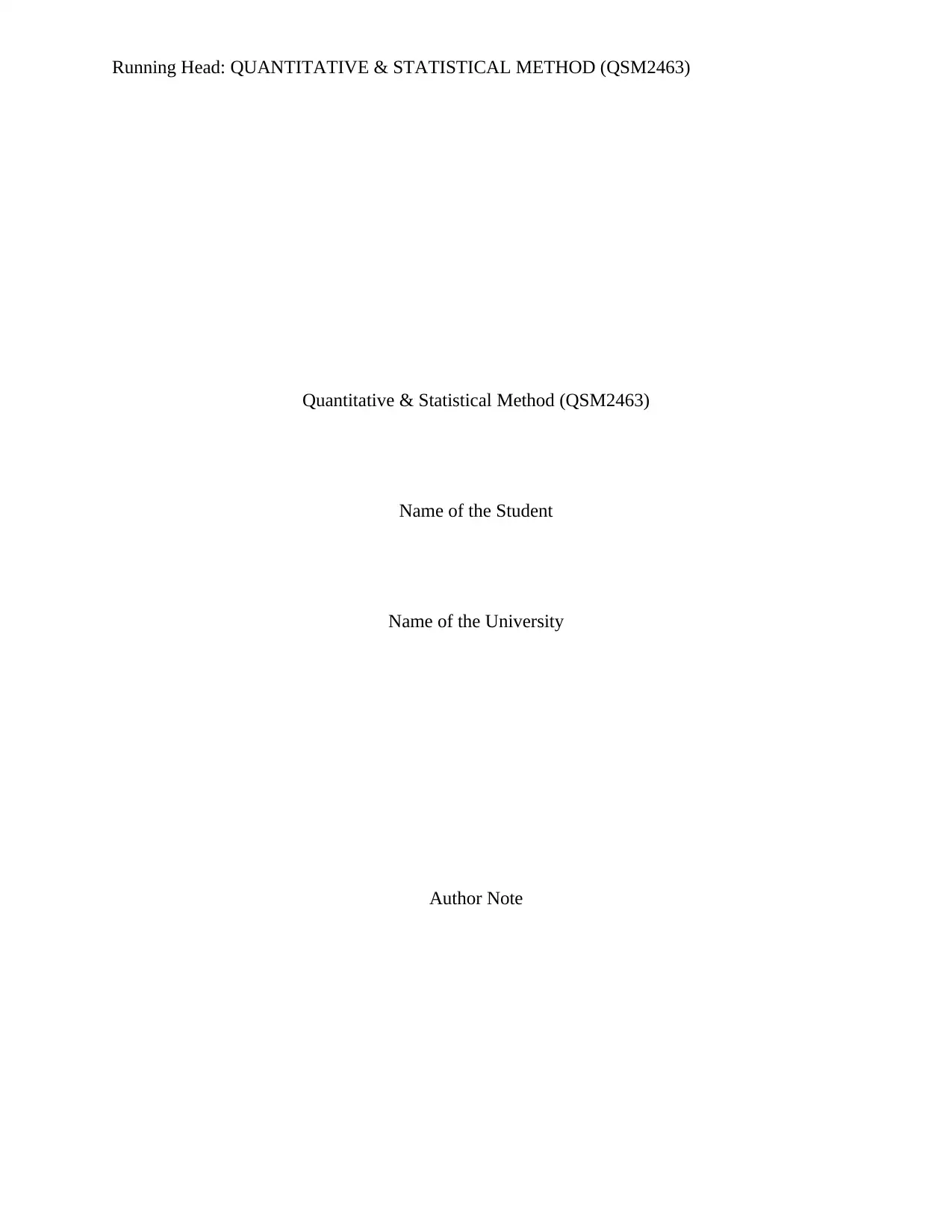
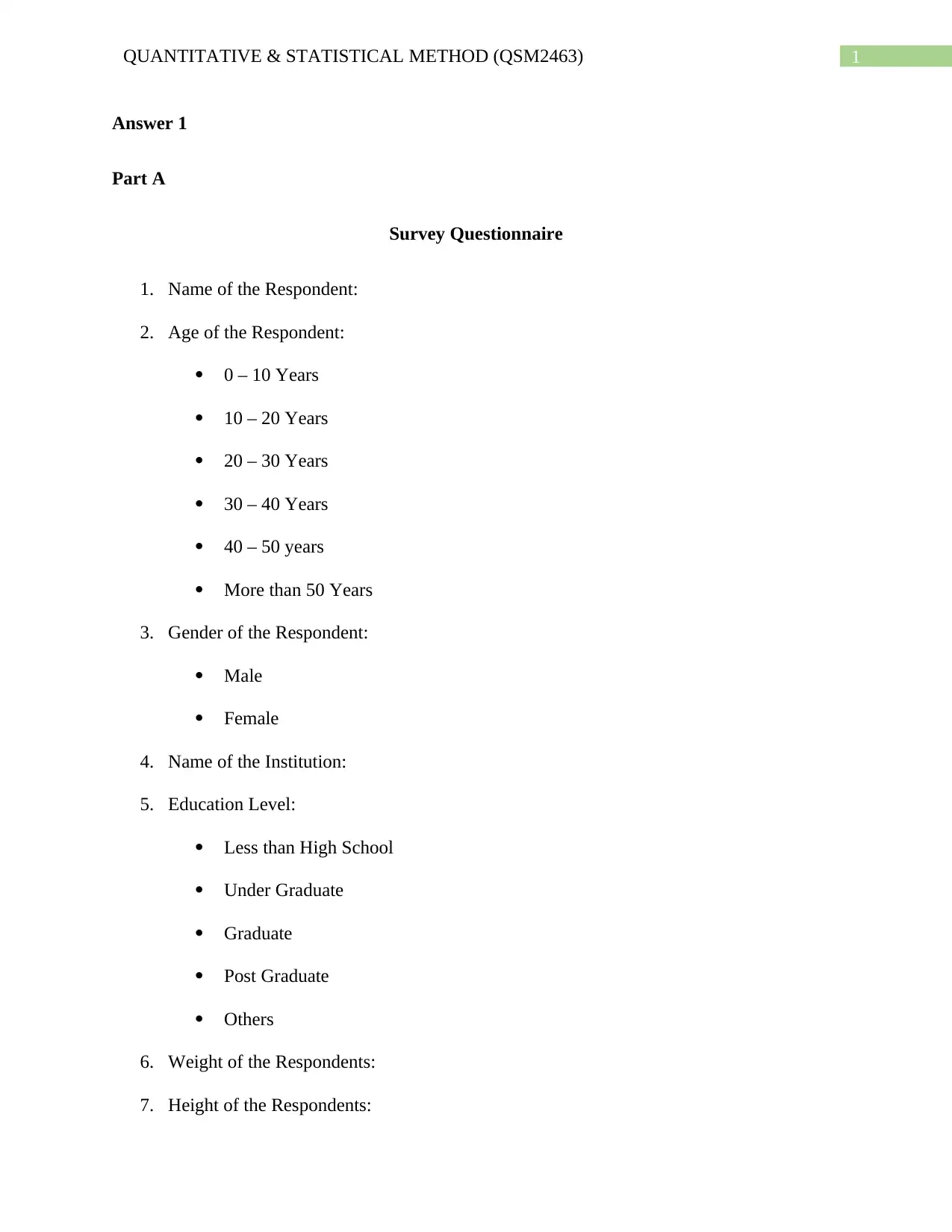
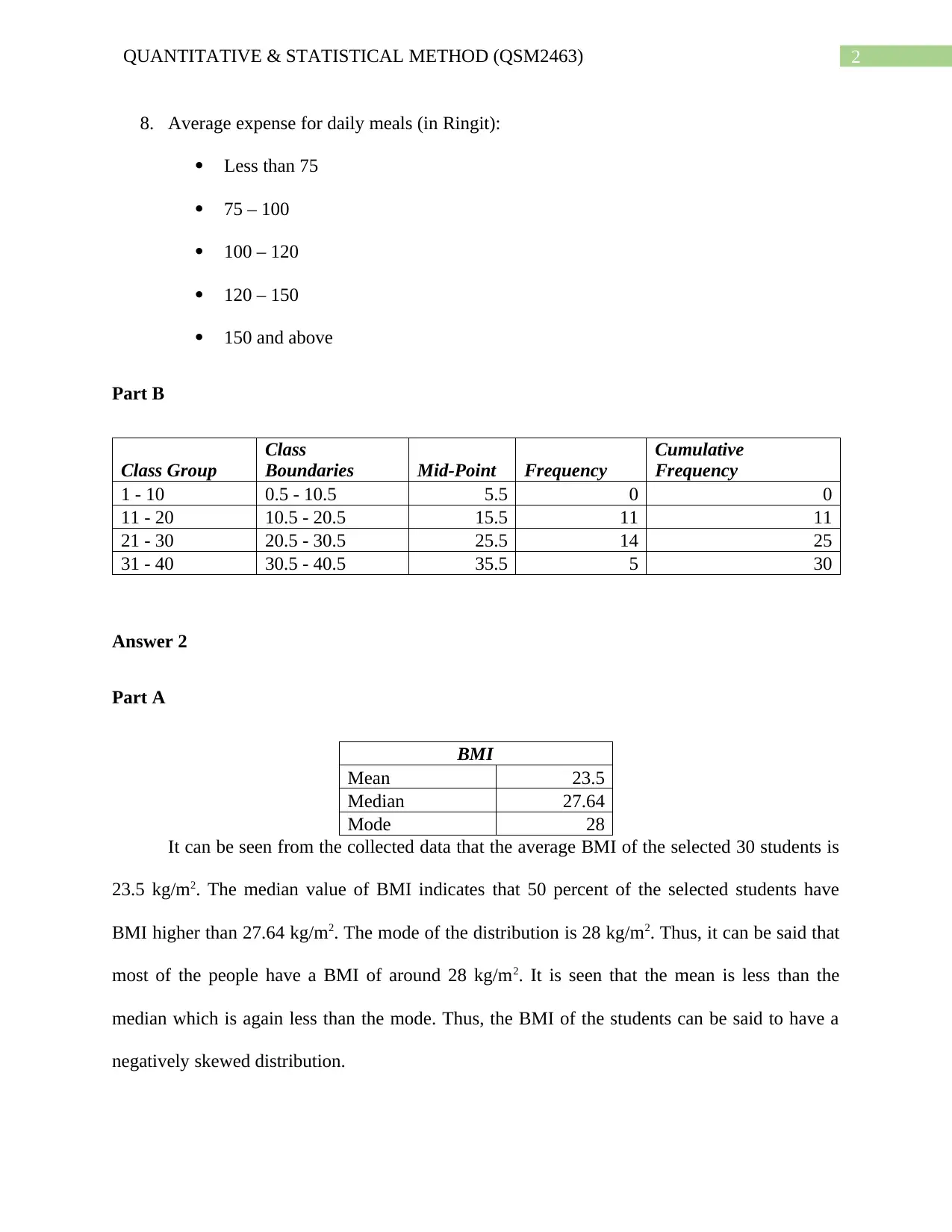

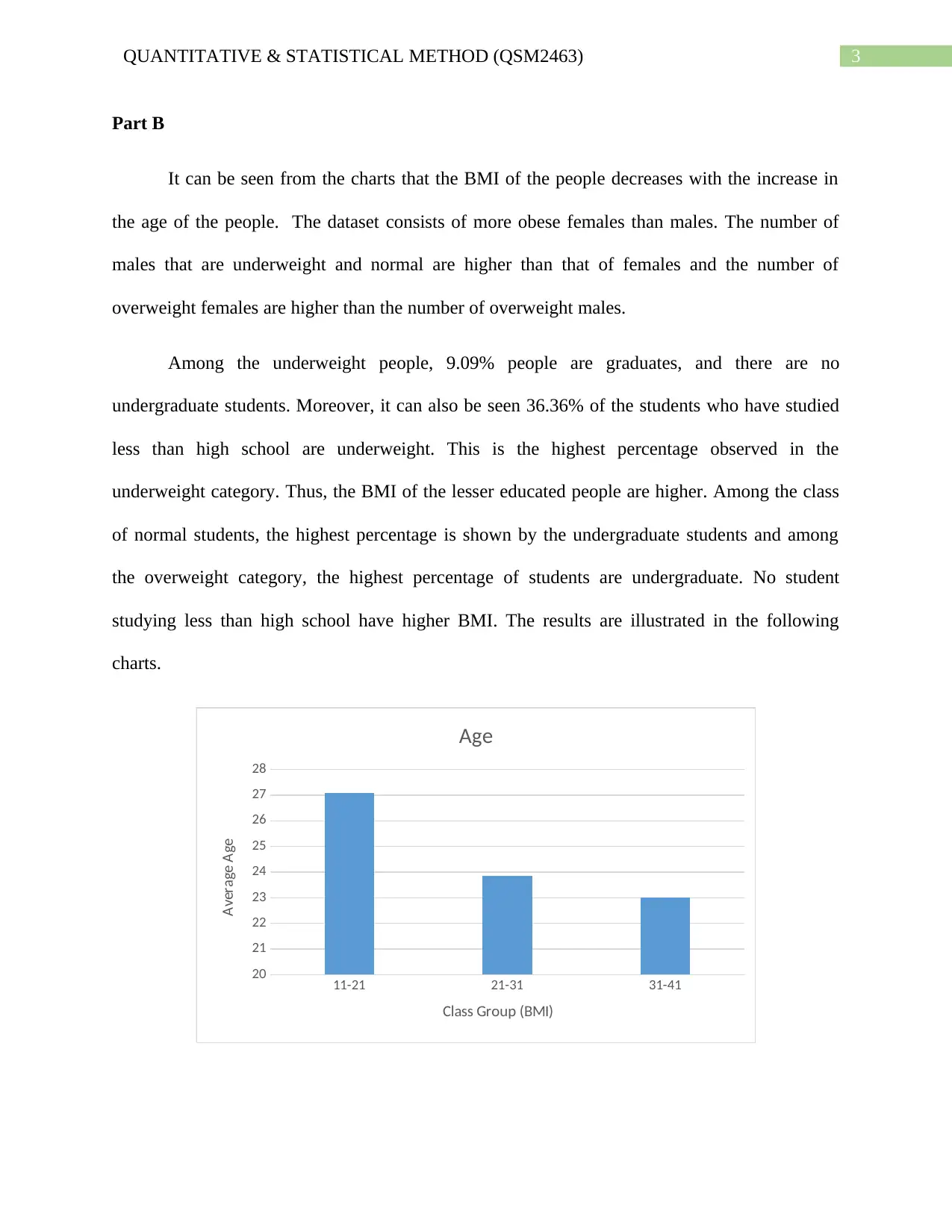
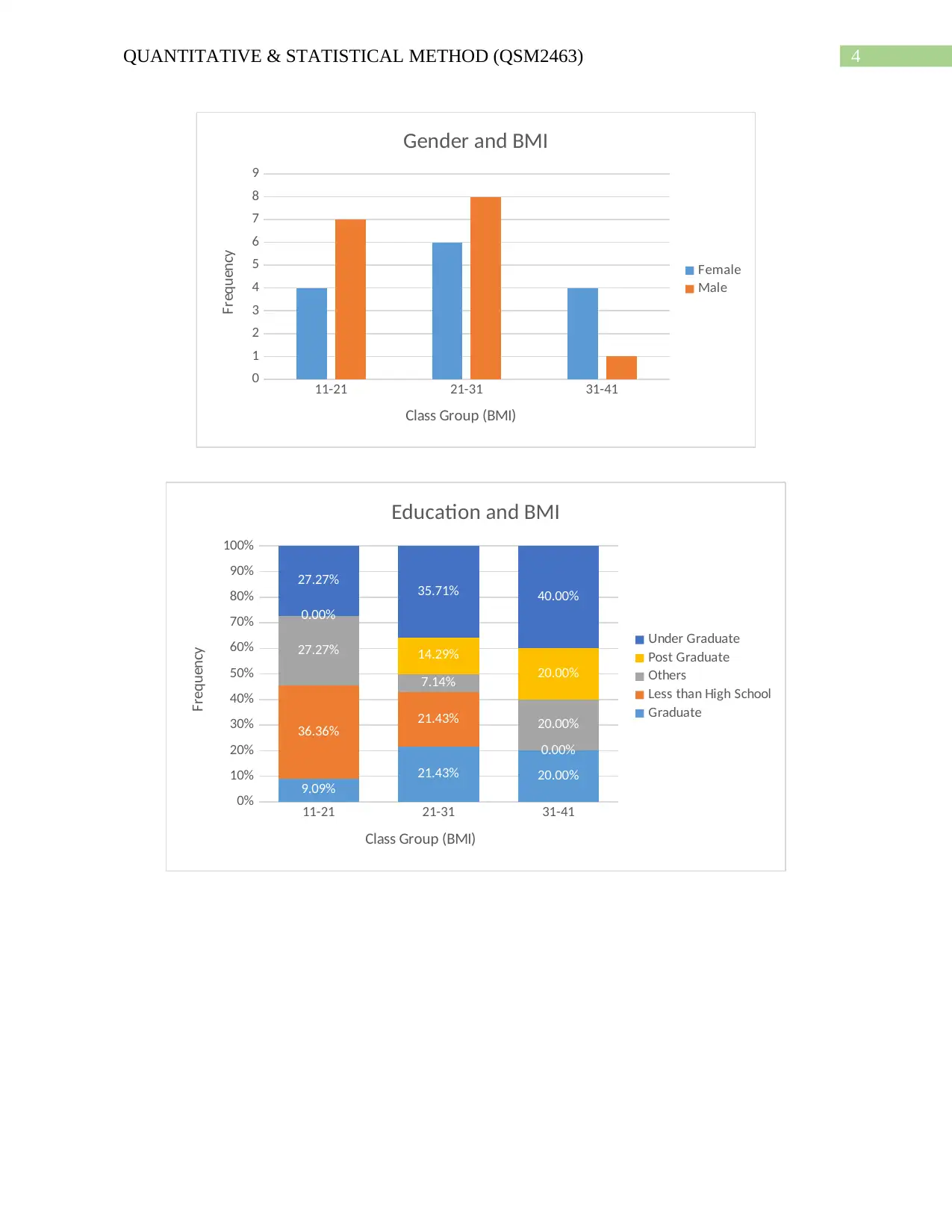
![[object Object]](/_next/static/media/star-bottom.7253800d.svg)